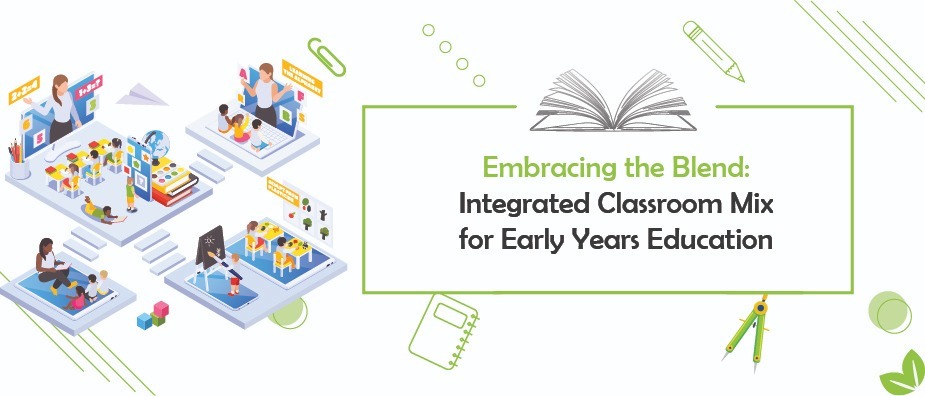Embracing the Blend: Integrated Classroom Mix for Early Years Education
In an era marked by rapid technological advancement, the integration of digital tools into early years education has become increasingly prevalent. However, the key lies in striking a balance between traditional classroom activities and digital learning experiences to ensure a holistic approach to education. This blog delves into the importance of adopting an integrated classroom mix, blending digital and traditional approaches to maximize learning outcomes for students in nursery to 5th grade, fostering both cognitive development and technological literacy in a gradual and age-appropriate manner.
In the foundational years of education, it is essential to introduce technology gradually, allowing students to develop a strong foundation in traditional learning methods while gradually integrating digital tools into their educational experience. By introducing technology in a slow and deliberate manner, educators can ensure that students have ample time to adapt to new learning modalities while also fostering critical thinking and problem-solving skills that are essential for navigating the digital landscape.
An integrated classroom mix enables educators to link learning with real-world implementation, providing students with hands-on experiences that reinforce classroom learning. By combining traditional activities such as group discussions, hands-on experiments, and artistic endeavors with digital tools such as educational apps, interactive whiteboards, and online simulations, educators can create dynamic learning environments that cater to diverse learning styles and preferences. This approach not only enhances students' understanding of concepts but also fosters creativity, collaboration, and problem-solving skills essential for success in the 21st century.
The integration of digital and classroom activities in early years education offers a myriad of benefits for students' mental abilities and brain development. Traditional activities such as storytelling, role-playing, and hands-on exploration stimulate various regions of the brain, promoting cognitive development and critical thinking skills. Similarly, digital tools provide opportunities for interactive learning experiences that engage multiple senses and enhance information retention. By combining these approaches, educators can create a rich and stimulating learning environment that nurtures well-rounded learners with strong cognitive abilities and a solid foundation for future academic success.
As educators, it is our responsibility to provide students with a well-rounded education that prepares them for success in an increasingly digital world. By adopting an integrated classroom mix that blends traditional and digital approaches to learning, we can maximize the potential of every student, fostering both cognitive development and technological literacy in a gradual and age-appropriate manner. Together, let us embrace the blend, creating dynamic learning environments that empower students to thrive in the 21st century and beyond.

